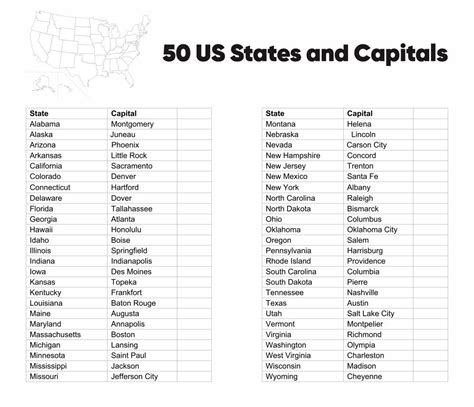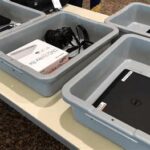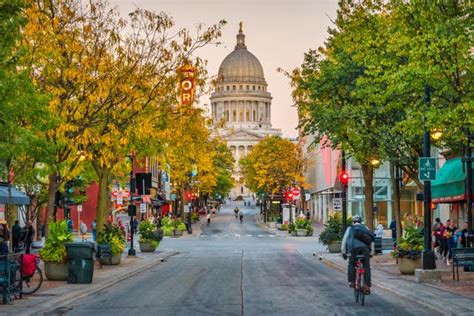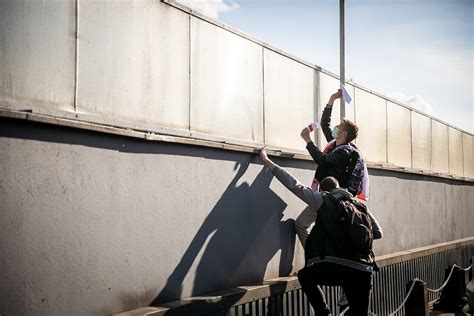
A traveler who embarked on a 30-day journey to visit all 50 U.S. state capitals has revealed their two least favorite cities: Trenton, New Jersey, and Springfield, Illinois. The traveler, known as @ShortsAndStout on TikTok, documented their ambitious road trip on social media, sharing both positive and negative experiences along the way.
A TikTok user, identifying themselves as @ShortsAndStout, recently completed a whirlwind tour of all 50 U.S. state capitals in just 30 days, offering insights and opinions on each city visited. While the traveler highlighted many positive aspects of their journey, they also openly shared their disappointments, ultimately naming Trenton, New Jersey, and Springfield, Illinois, as their least favorite destinations. The social media journey, documented across platforms, has sparked discussion and debate about the merits and drawbacks of these often-overlooked state capitals. The reasons cited ranged from perceived safety concerns and lack of attractions to general urban decay and a lack of vibrancy.
The cross-country journey, a feat of logistical planning and endurance, was chronicled on TikTok, where @ShortsAndStout shared videos and commentary on each capital city. The content ranged from showcasing historical landmarks and local cuisine to offering frank assessments of the overall atmosphere and appeal of each location. The traveler’s candid reviews resonated with a wide audience, generating significant engagement and prompting viewers to share their own experiences and perspectives on the featured cities.
The traveler’s main complaints regarding Trenton centered on a perceived lack of safety and general disrepair. The TikTok user stated, “I didn’t feel safe there… a lot of the city was falling apart.” This sentiment was echoed by some commenters on the TikTok videos who shared similar concerns about the city’s current state. The challenges facing Trenton, a city grappling with economic hardship and urban blight, were brought into sharp focus by the traveler’s unflinching assessment.
Springfield, Illinois, the other city identified as a least favorite, drew criticism for a different set of reasons. While @ShortsAndStout acknowledged the city’s historical significance as the home of Abraham Lincoln, they found the overall atmosphere to be underwhelming and lacking in vibrancy. The traveler described Springfield as “boring” and expressed disappointment with the limited number of attractions and activities available. This assessment has prompted a debate about the challenges of preserving historical sites while simultaneously fostering economic growth and creating a dynamic urban environment.
The traveler’s experiences in Trenton and Springfield highlight the diverse realities of U.S. state capitals. While some capitals, such as Austin, Texas, and Madison, Wisconsin, are thriving centers of culture, commerce, and innovation, others face significant challenges in attracting investment, retaining residents, and maintaining their infrastructure. The @ShortsAndStout journey serves as a reminder of the importance of addressing these disparities and investing in the revitalization of struggling urban centers.
Beyond the two least favorite cities, the TikToker highlighted other cities that did not quite meet expectations, though they were not explicitly named the “worst”. The full list of rankings and reviews, available on @ShortsAndStout’s TikTok account, provides a more comprehensive picture of the traveler’s experiences and opinions. The social media journey serves as a unique form of travel journalism, offering a firsthand perspective on the diverse landscapes and urban environments of the United States.
The ambitious road trip was not without its challenges. Logistically, planning a route that covered all 50 state capitals in just 30 days required meticulous preparation and adherence to a strict schedule. The traveler also faced the inevitable stresses of long-distance driving, navigating unfamiliar cities, and dealing with unexpected delays. Despite these challenges, @ShortsAndStout successfully completed the journey, providing a valuable and engaging account of their experiences.
The impact of social media on travel and tourism is undeniable. Platforms like TikTok have empowered individuals to share their travel experiences with a global audience, influencing travel decisions and shaping perceptions of different destinations. The @ShortsAndStout journey is a prime example of this phenomenon, demonstrating the power of social media to inform, entertain, and spark conversations about the places we visit. The readily available, uncensored opinions presented by social media travel bloggers are proving to be a strong influence on younger generations, and their choices of tourism.
The journey of @ShortsAndStout through the 50 state capitals provides a unique lens through which to view the United States. It underscores the diversity of American cities, the challenges they face, and the opportunities they offer. The traveler’s candid reviews, shared on social media, have sparked a valuable conversation about the importance of investing in urban revitalization, preserving historical landmarks, and creating vibrant and welcoming communities for all. The conversations that arise from these social media postings, whether agreement or disagreement, can be extremely valuable in guiding policy decisions.
Frequently Asked Questions (FAQ)
1. What was the main purpose of @ShortsAndStout’s 50-state capital road trip?
The main purpose was to visit and document all 50 U.S. state capitals in 30 days, sharing their experiences and opinions on each city via social media, specifically TikTok. The journey served as a personal challenge and a form of travel journalism, offering a firsthand perspective on the diverse landscapes and urban environments of the United States.
2. Why were Trenton, New Jersey, and Springfield, Illinois, chosen as the least favorite cities?
According to @ShortsAndStout, Trenton was perceived as unsafe and in disrepair. The traveler stated, “I didn’t feel safe there… a lot of the city was falling apart.” Springfield, while acknowledged for its historical significance as the home of Abraham Lincoln, was described as “boring” and lacking in vibrancy, with limited attractions and activities.
3. How did @ShortsAndStout document their journey?
@ShortsAndStout documented their journey primarily through TikTok, sharing videos and commentary on each capital city. The content included showcasing historical landmarks, local cuisine, and offering frank assessments of the overall atmosphere and appeal of each location. They also used other social media platforms to share their experience.
4. What impact did @ShortsAndStout’s social media posts have?
The social media posts generated significant engagement, prompting viewers to share their own experiences and perspectives on the featured cities. The journey sparked discussions about the challenges facing struggling urban centers, the importance of urban revitalization, and the impact of social media on travel and tourism. The readily available opinions can have a strong influence on younger generations and their tourism choices.
5. What challenges did @ShortsAndStout face during the road trip?
The challenges included logistical planning to cover all 50 capitals in 30 days, adhering to a strict schedule, long-distance driving, navigating unfamiliar cities, and dealing with unexpected delays. Despite these challenges, @ShortsAndStout successfully completed the journey.
Expanded Article
The whirlwind tour of the United States’ state capitals undertaken by TikTok user @ShortsAndStout has offered a glimpse into the diverse realities of urban life across the nation. While the traveler aimed to provide a balanced view, highlighting both the positive and negative aspects of each city visited, the stark contrast between thriving metropolises and struggling urban centers became increasingly apparent. The selection of Trenton, New Jersey, and Springfield, Illinois, as the two least favorite destinations has ignited a broader conversation about urban decay, economic disparity, and the challenges of maintaining historical significance in the face of modern development.
Trenton, the capital of New Jersey, has long grappled with economic hardship and urban blight. The city’s struggles are rooted in a complex interplay of factors, including deindustrialization, population decline, and a lack of investment in infrastructure and public services. Once a thriving industrial hub, Trenton experienced a significant decline in manufacturing jobs in the latter half of the 20th century, leading to widespread unemployment and poverty. The city’s population has also steadily decreased over the years, further exacerbating its economic woes. The departure of residents and businesses has resulted in a shrinking tax base, making it difficult for the city to fund essential services and maintain its infrastructure. The perception of a lack of safety, as expressed by @ShortsAndStout, is a major deterrent for potential investors and residents. Addressing these challenges will require a concerted effort from local, state, and federal governments, as well as private sector partners, to revitalize the city’s economy, improve public safety, and enhance the quality of life for its residents. Potential solutions include attracting new businesses, creating job training programs, investing in infrastructure improvements, and implementing community policing strategies.
Springfield, Illinois, the capital of the “Land of Lincoln,” presents a different set of challenges. While the city boasts a rich history and numerous historical landmarks, including the Abraham Lincoln Presidential Library and Museum, it has struggled to attract a critical mass of visitors and residents to sustain a vibrant economy. The city’s reliance on government jobs and its relatively small size have limited its economic diversification and growth potential. The perception of being “boring,” as expressed by @ShortsAndStout, reflects a broader concern about the lack of cultural attractions, entertainment options, and opportunities for young people. Addressing this challenge will require a multifaceted approach that focuses on promoting tourism, attracting new businesses, and creating a more dynamic and engaging urban environment. Potential solutions include investing in cultural amenities, developing new entertainment venues, supporting small businesses and entrepreneurs, and improving the city’s overall aesthetic appeal. It’s also important to recognize the balance between preserving historical sites and monuments while modernizing a city for the future.
The contrasting experiences in Trenton and Springfield highlight the diverse realities of U.S. state capitals. While some capitals, such as Austin, Texas, and Madison, Wisconsin, are thriving centers of culture, commerce, and innovation, others face significant challenges in attracting investment, retaining residents, and maintaining their infrastructure. These disparities are often rooted in historical factors, economic trends, and policy decisions. State capitals that have successfully diversified their economies, invested in education and infrastructure, and fostered a welcoming environment for businesses and residents have generally fared better than those that have relied on traditional industries or government jobs. The @ShortsAndStout journey serves as a reminder of the importance of addressing these disparities and investing in the revitalization of struggling urban centers.
The role of state capitals in their respective states is multifaceted. They serve as the seat of government, the center of political activity, and often the home of important historical and cultural institutions. State capitals also play a crucial role in shaping state policy, allocating resources, and promoting economic development. However, the effectiveness of state capitals can vary widely depending on a range of factors, including the quality of leadership, the strength of the economy, and the level of civic engagement.
The impact of social media on travel and tourism is undeniable. Platforms like TikTok have empowered individuals to share their travel experiences with a global audience, influencing travel decisions and shaping perceptions of different destinations. The @ShortsAndStout journey is a prime example of this phenomenon, demonstrating the power of social media to inform, entertain, and spark conversations about the places we visit. Social media has democratized travel journalism, allowing ordinary individuals to share their perspectives and experiences without the filter of traditional media outlets. This has led to a more diverse and authentic representation of travel destinations, as well as a greater emphasis on personal experiences and recommendations. However, it is also important to be aware of the potential for bias and misinformation on social media, and to critically evaluate the information that is shared.
The journey of @ShortsAndStout through the 50 state capitals provides a unique lens through which to view the United States. It underscores the diversity of American cities, the challenges they face, and the opportunities they offer. The traveler’s candid reviews, shared on social media, have sparked a valuable conversation about the importance of investing in urban revitalization, preserving historical landmarks, and creating vibrant and welcoming communities for all. This conversation is particularly relevant in the context of the ongoing economic and social changes that are transforming American cities. As the population shifts, industries evolve, and technology advances, state capitals must adapt and innovate to remain competitive and relevant. This requires a commitment to long-term planning, strategic investment, and collaboration between government, businesses, and community organizations.
The long-term consequences of urban decay are far-reaching, affecting not only the residents of struggling cities but also the broader region and the nation as a whole. Urban decay can lead to increased crime rates, declining property values, reduced tax revenues, and a loss of economic opportunity. It can also exacerbate social inequalities and create a sense of hopelessness and despair among residents. Addressing urban decay requires a comprehensive and sustained effort that tackles the root causes of the problem, including poverty, unemployment, lack of education, and inadequate housing. It also requires a commitment to creating safe, healthy, and vibrant communities where people can live, work, and raise families.
The revitalization of struggling urban centers is not only a moral imperative but also an economic necessity. By investing in urban revitalization, we can create jobs, stimulate economic growth, and improve the quality of life for millions of Americans. Urban revitalization can also help to reduce income inequality, promote social mobility, and strengthen communities. It is an investment that will pay dividends for generations to come.
The challenges facing Trenton and Springfield are not unique. Many other U.S. state capitals and cities across the country are grappling with similar issues. By learning from the experiences of these cities, we can develop more effective strategies for addressing urban decay and promoting urban revitalization. It is essential to foster a spirit of collaboration and innovation, to share best practices, and to learn from both successes and failures. By working together, we can create a more just, equitable, and prosperous future for all Americans.
The story of @ShortsAndStout’s journey is a reminder that travel is not just about visiting famous landmarks and enjoying scenic landscapes. It is also about engaging with different cultures, learning about different perspectives, and understanding the challenges and opportunities facing different communities. By traveling responsibly and thoughtfully, we can become more informed citizens and contribute to a more just and sustainable world.
The candid reviews provided by @ShortsAndStout serves as a public service. The sharing of travel experiences, both good and bad, can influence travel decisions, educate the public, and spark conversations about important issues. The rise of social media has made it easier than ever for individuals to share their travel experiences and to connect with others who share their interests. This has created a powerful platform for promoting responsible travel, advocating for sustainable tourism, and raising awareness about the challenges facing communities around the world.
In conclusion, the journey of @ShortsAndStout through the 50 state capitals provides a valuable insight into the diverse realities of American cities. While the traveler’s experiences in Trenton and Springfield were less than positive, they have sparked an important conversation about urban decay, economic disparity, and the challenges of maintaining historical significance in the face of modern development. By addressing these challenges and investing in urban revitalization, we can create a more just, equitable, and prosperous future for all Americans. The power of social media in influencing tourism cannot be understated. As travel evolves, it is important to consider the impact one individual can have in shaping perceptions and promoting change through their travel experiences.









